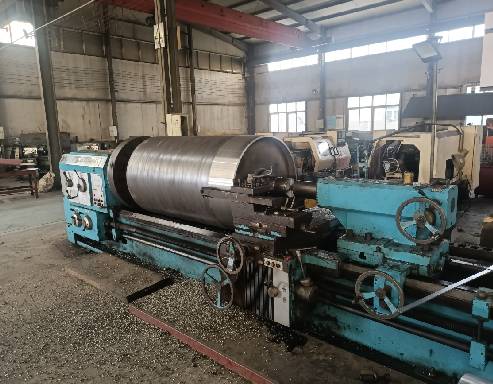 Afrikaans
Afrikaans  Albanian
Albanian  Amharic
Amharic  Arabic
Arabic  Armenian
Armenian  Azerbaijani
Azerbaijani  Basque
Basque  Belarusian
Belarusian  Bengali
Bengali  Bosnian
Bosnian  Bulgarian
Bulgarian  Catalan
Catalan  Cebuano
Cebuano  Corsican
Corsican  Croatian
Croatian  Czech
Czech  Danish
Danish  Dutch
Dutch  English
English  Esperanto
Esperanto  Estonian
Estonian  Finnish
Finnish  French
French  Frisian
Frisian  Galician
Galician  Georgian
Georgian  German
German  Greek
Greek  Gujarati
Gujarati  Haitian Creole
Haitian Creole  hausa
hausa  hawaiian
hawaiian  Hebrew
Hebrew  Hindi
Hindi  Miao
Miao  Hungarian
Hungarian  Icelandic
Icelandic  igbo
igbo  Indonesian
Indonesian  irish
irish  Italian
Italian  Japanese
Japanese  Javanese
Javanese  Kannada
Kannada  kazakh
kazakh  Khmer
Khmer  Rwandese
Rwandese  Korean
Korean  Kurdish
Kurdish  Kyrgyz
Kyrgyz  Lao
Lao  Latin
Latin  Latvian
Latvian  Lithuanian
Lithuanian  Luxembourgish
Luxembourgish  Macedonian
Macedonian  Malgashi
Malgashi  Malay
Malay  Malayalam
Malayalam  Maltese
Maltese  Maori
Maori  Marathi
Marathi  Mongolian
Mongolian  Myanmar
Myanmar  Nepali
Nepali  Norwegian
Norwegian  Norwegian
Norwegian  Occitan
Occitan  Pashto
Pashto  Persian
Persian  Polish
Polish  Portuguese
Portuguese  Punjabi
Punjabi  Romanian
Romanian  Russian
Russian  Samoan
Samoan  Scottish Gaelic
Scottish Gaelic  Serbian
Serbian  Sesotho
Sesotho  Shona
Shona  Sindhi
Sindhi  Sinhala
Sinhala  Slovak
Slovak  Slovenian
Slovenian  Somali
Somali  Spanish
Spanish  Sundanese
Sundanese  Swahili
Swahili  Swedish
Swedish  Tagalog
Tagalog  Tajik
Tajik  Tamil
Tamil  Tatar
Tatar  Telugu
Telugu  Thai
Thai  Turkish
Turkish  Turkmen
Turkmen  Ukrainian
Ukrainian  Urdu
Urdu  Uighur
Uighur  Uzbek
Uzbek  Vietnamese
Vietnamese  Welsh
Welsh  Bantu
Bantu  Yiddish
Yiddish  Yoruba
Yoruba  Zulu
Zulu Exploring the Mechanics and Applications of Conveyor Belt Rolls in Industry
The Versatility and Importance of Conveyor Belt Rolls
Conveyor belt rolls are integral components of many industries today, aiding in the efficient transportation of goods and materials. The basic purpose of a conveyor belt is to move items from one location to another within a facility, making these rolls invaluable for optimizing workflow and productivity. Various industries, including manufacturing, mining, and logistics, utilize conveyor belt systems to streamline operations and reduce manual labor.
What is a Conveyor Belt Roll?
A conveyor belt roll, in simple terms, is a continuous loop of material that is designed to transport items. The belt is often made of durable materials like rubber, fabric, or metal, depending on the application requirements. Conveyor belt rolls come in different lengths, widths, and thicknesses, tailored for specific tasks, loads, and environments.
The construction of a conveyor belt roll can include various features, such as reinforced edges for durability, textured surfaces for better grip, and flexibility for navigating turns and inclines. The choice of material and design is determined by the type of materials being transported, the environment in which the conveyor will operate, and the desired speed of movement.
Types of Conveyor Belt Rolls
There are several types of conveyor belt rolls, each suited to particular applications
1. Flat Belts These are the most common type of conveyor belts, often found in manufacturing and assembly lines for transporting items over horizontal distances.
2. Modular Belts Composed of interlocking plastic segments, these belts are modular and can be easily maintained or replaced, making them popular in food processing and packaging industries.
3. Wire Mesh Belts These are made from metal wires woven together, suitable for high-temperature applications like baking or frying.
4. Incline/Decline Belts Designed for transporting items up or down steep angles, these belts often have cleats or ribs to prevent items from sliding back.
conveyor belt roll

Advantages of Conveyor Belt Rolls
The use of conveyor belt rolls brings numerous advantages
- Increased Efficiency By automating the transport of materials, conveyor belts speed up production processes. This leads to quicker turnaround times and increased output.
- Reduced Labor Costs The reliance on conveyor systems diminishes the need for manual labor in transporting goods, allowing businesses to allocate human resources to more skilled tasks.
- Safety Improvements Conveyor belts reduce the risk of injury associated with manually lifting and moving heavy items. Safety features, such as guards and emergency stops, further enhance worker safety.
- Versatile Applications Conveyor belts can handle a wide range of materials, from delicate products to heavy loads, making them suitable for various industries.
- Customizability Conveyor systems can be designed and modified to fit specific operational needs, including adjustments for height, speed, and load capacity.
Maintenance and Longevity
To ensure optimal efficiency and safety, regular maintenance of conveyor belt rolls is crucial. This includes checking for wear and tear, adjusting tension, and keeping the belts clean. Routine inspections help identify potential issues before they escalate, prolonging the lifespan of the conveyor system and minimizing downtime.
Additionally, investing in high-quality conveyor belt rolls will ultimately save costs in the long run. Businesses are advised to work with reputable manufacturers who offer durable materials and reliable warranties.
Conclusion
Conveyor belt rolls play a pivotal role in modern industries, significantly impacting productivity, safety, and operational efficiency. Their versatility allows them to be adapted to various applications, making them a staple in factories, warehouses, and distribution centers. As technology continues to advance, the innovations within conveyor systems are expected to offer even more advanced features, further enhancing their role in optimizing business operations. Understanding the importance of these simple yet effective machines can pave the way for improved processes and increased profitability across various sectors.
-
Revolutionizing Conveyor Reliability with Advanced Rubber Lagging PulleysNewsJul.22,2025
-
Powering Precision and Durability with Expert Manufacturers of Conveyor ComponentsNewsJul.22,2025
-
Optimizing Conveyor Systems with Advanced Conveyor AccessoriesNewsJul.22,2025
-
Maximize Conveyor Efficiency with Quality Conveyor Idler PulleysNewsJul.22,2025
-
Future-Proof Your Conveyor System with High-Performance Polyurethane RollerNewsJul.22,2025
-
Driving Efficiency Forward with Quality Idlers and RollersNewsJul.22,2025





























